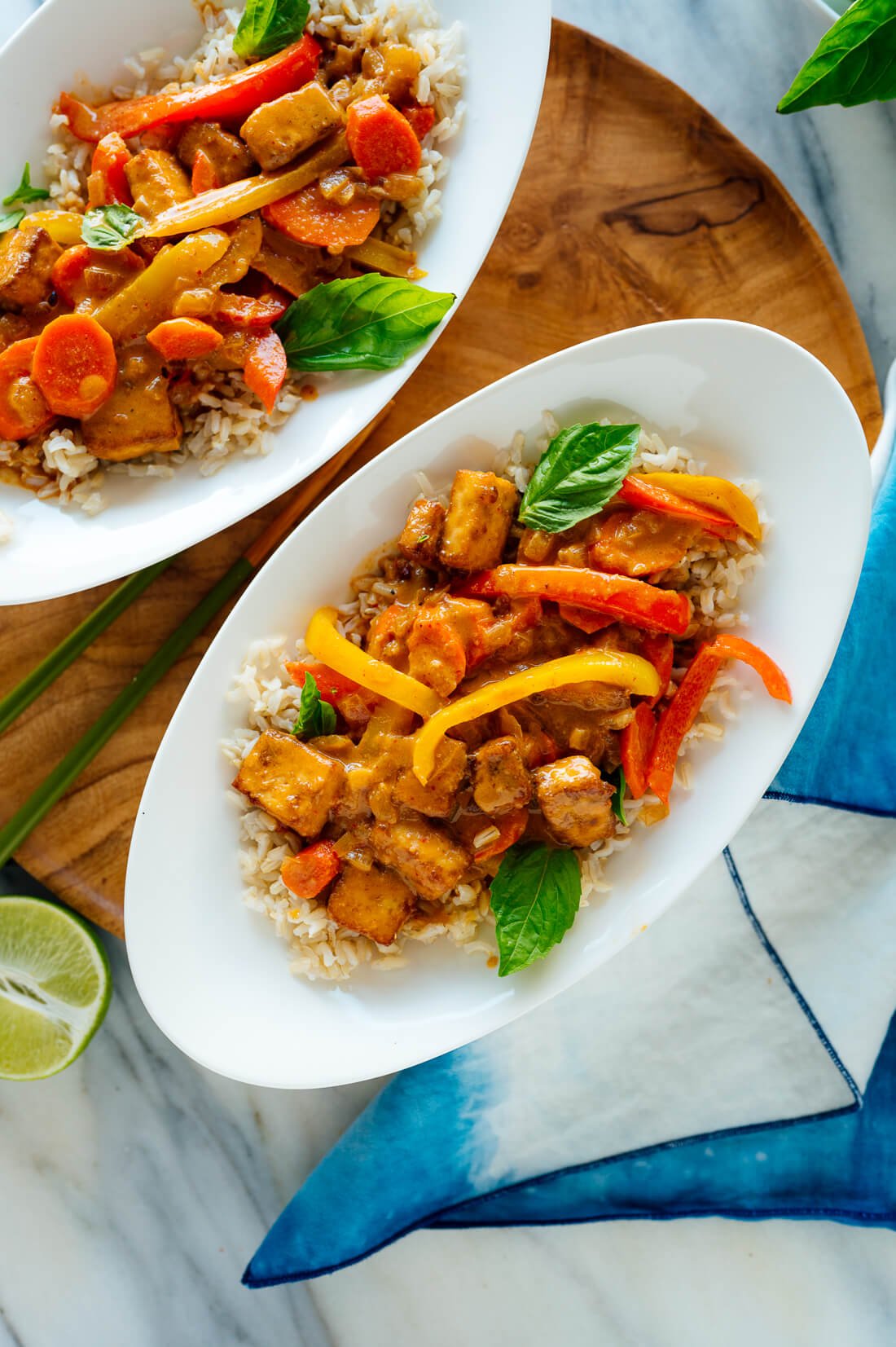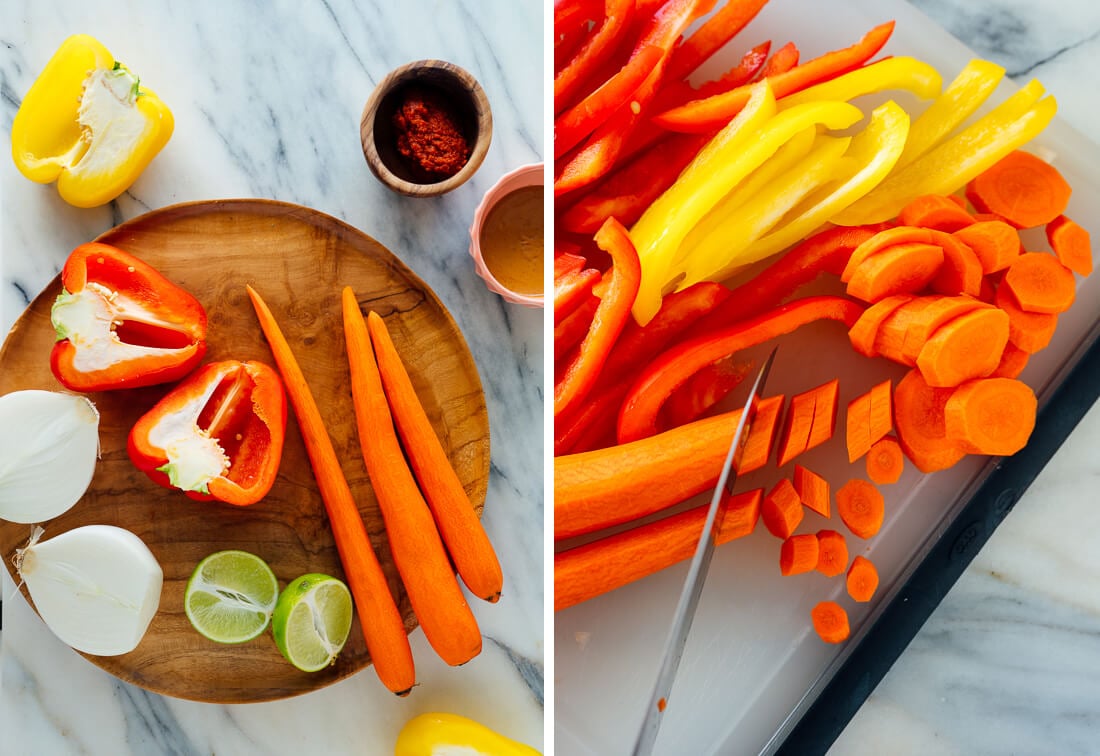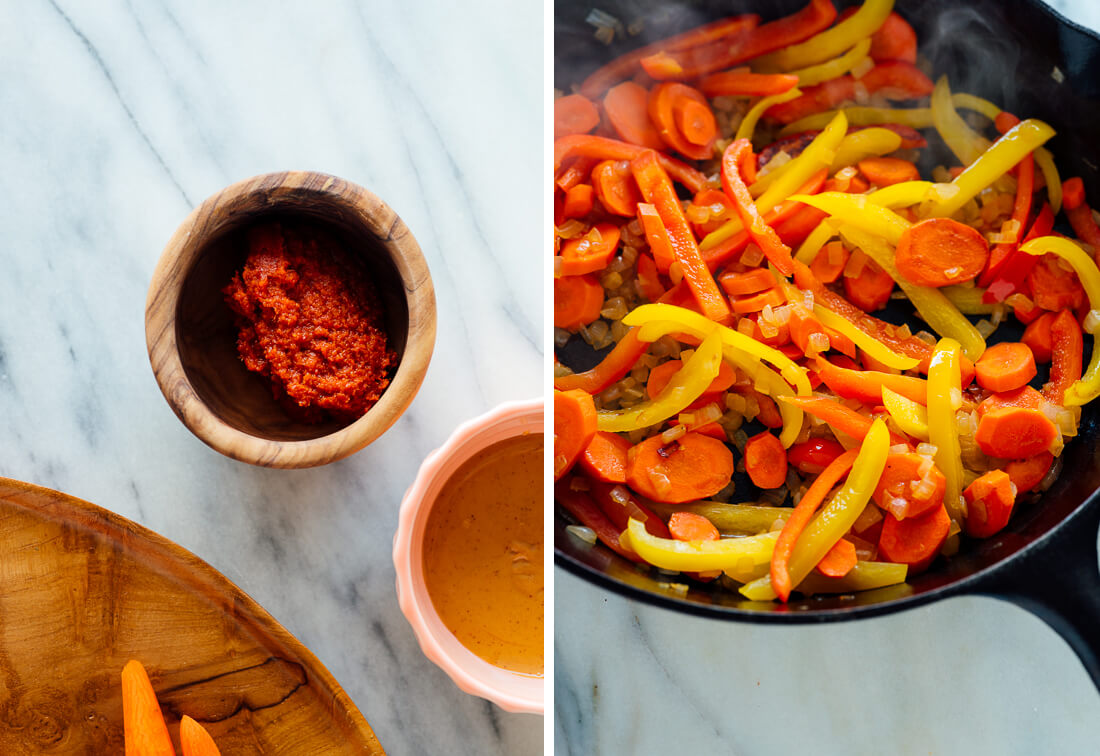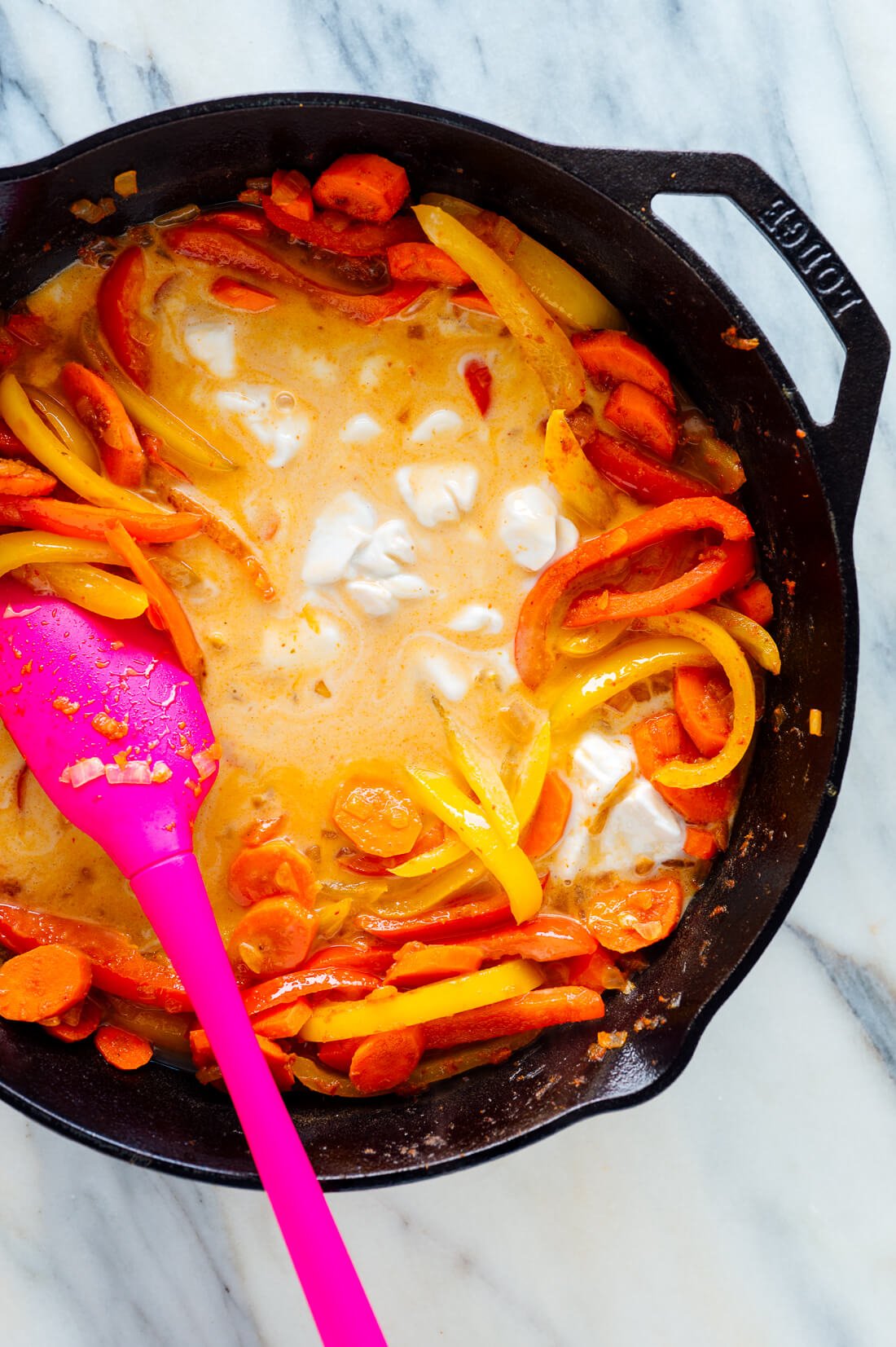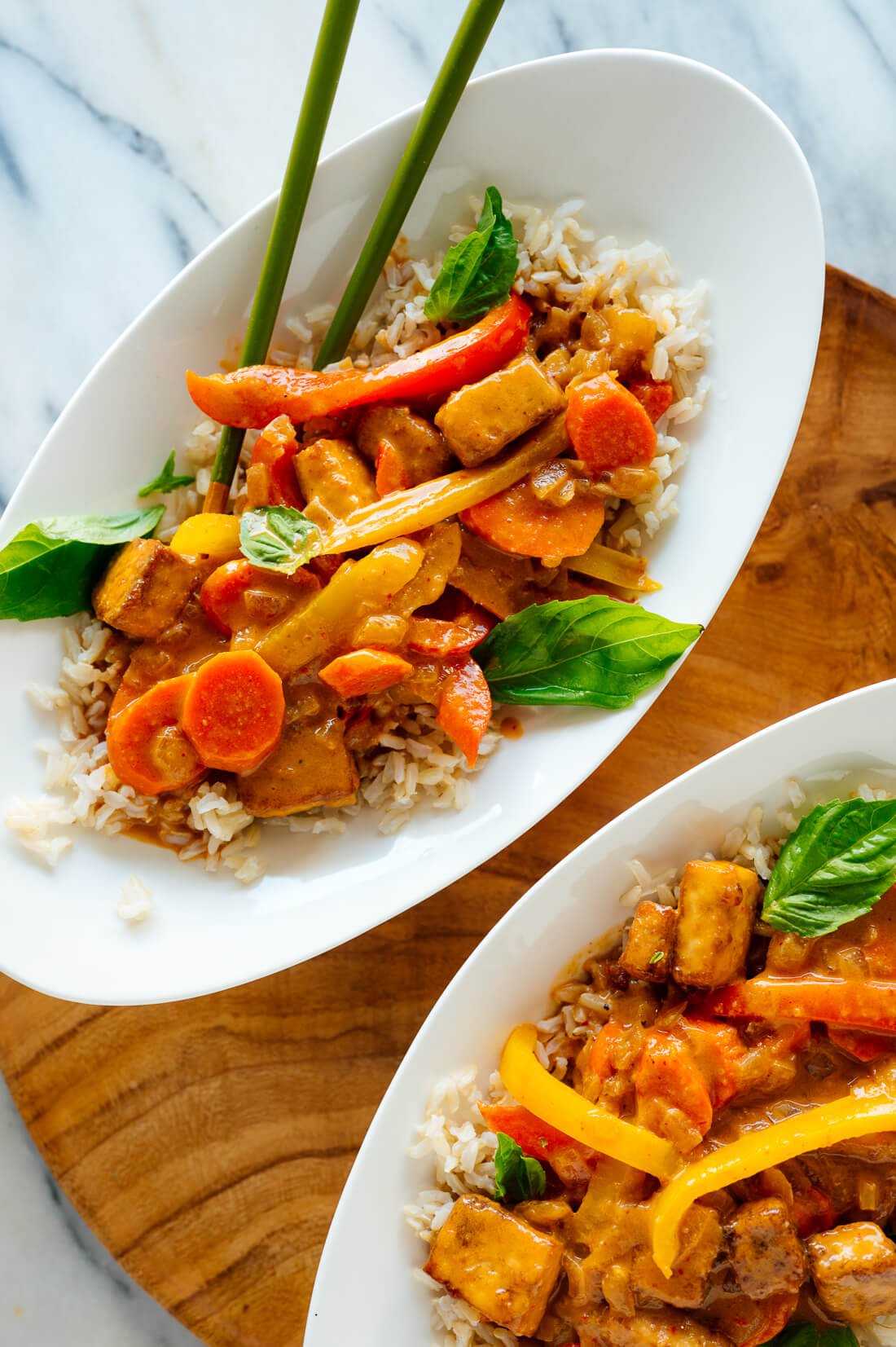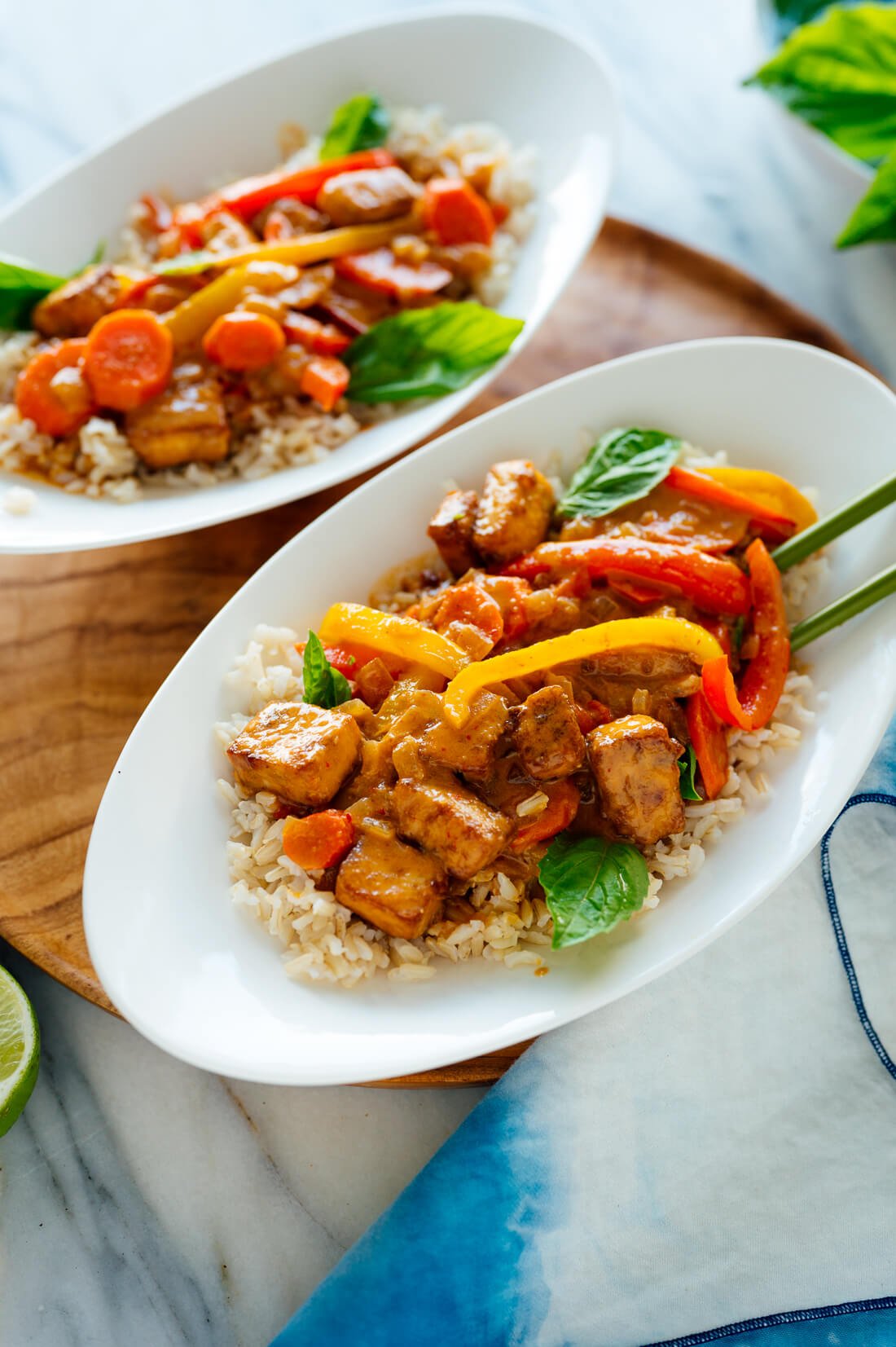Have you had panang curry yet? Panang curry is rich and creamy, spicy yet balanced, with underlying notes of peanut and coconut. I make my panang curry with lots of bell peppers and carrots, and optional tofu for extra protein. It’s a perfectly satisfying weeknight meal for cold days.
Panang is one of my favorite Thai curries, right up there with red curry and green curry. If you haven’t ordered it at your favorite Thai restaurant yet, you’ve been missing out!
Watch How to Make Panang Curry
Panang Curry Paste Notes
When it comes to Thai curries, the curry paste represents a big portion of the final flavor. You’ll need panang curry paste to make panang curry!
What’s in panang curry paste?
Panang curry pastes vary somewhat from brand to brand, but they typically include dried chili peppers, galangal, ginger, lemongrass, kaffir lime zest, kaffir lime leaves, coriander root, coriander seeds, and cumin seeds. You could make your own curry paste if you have those ingredients at home, but I’m betting that you don’t.
Special diet considerations
Where to buy it
Panang curry paste is a little more difficult to find than standard red or green Thai curries. You might get lucky and find it in the international section of your grocery store, somewhere near the soy sauce. You would definitely find it at an Asian grocery store. You can also buy it online, like I did.
Panang Curry Notes
I’ll be the first to point out that this recipe isn’t quite traditional. I made some changes to suit my vegetarian diet, and tried to use ingredients that are easy to find in the States. Here’s how my recipe differs from authentic curries:
I used vegan curry paste (many contain shrimp). I didn’t add kaffir lime leaves, which are typically simmered in the coconut milk for extra flavor. I couldn’t find them. Fortunately, the curry pastes I’ve recommended actually contain this ingredient. I used tofu instead of other proteins (often shrimp or chicken). I used soy sauce instead of fish sauce. Actually, I used tamari, which is a Japanese soy sauce that is typically gluten free (most soy sauces are not). I simply prefer the flavor of tamari over soy sauce. I garnished the dish with regular basil because I couldn’t find Thai basil. I thought it was great that way, but if you can find Thai basil, you might like that even more.
Before You Get Started
If you want to serve tofu with your curry, I’d recommend making that first. You can start on the curry once the tofu is in the oven. Here’s the recipe. If you want to serve rice with your curry, I typed up suggested quantities and how to cook it within the recipe below. (I always cook with brown rice, but you could use another rice if you cook it according to the package’s directions.) You might also enjoy the curry with cooked noodles or on its own.
How to Make Panang Curry
This curry recipe comes together quickly once you’ve chopped your veggies. Please let me know how your curry turns out in the comments! I love hearing from you. Craving more fresh Thai recipes? Here are a few favorites:
Thai Red Curry with Vegetables Thai Green Curry with Spring Vegetables Thai Pineapple Fried Rice Thai Mango Salad with Peanut Dressing
Make it vegan: Make sure your curry paste is free of shellfish and fish sauce. See recommendations provided above. Make it nut free: Omit the peanut butter, and verify that your curry paste is nut free.

